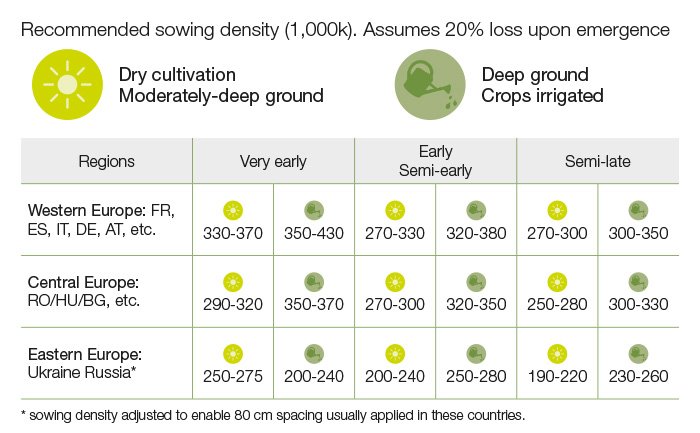
Sowing date
Select a variety with earliness so that flowering occurs in July and maturity – harvesting by 15 October. Generally speaking, the month of May is the optimal time for sowing. In some regions, the soil temperatures can reach 12°C from as early as the second half of April, making it possible to start sowing. In the warmest regions, it can be sowed until late June as a catch crop, with very early varieties.


















